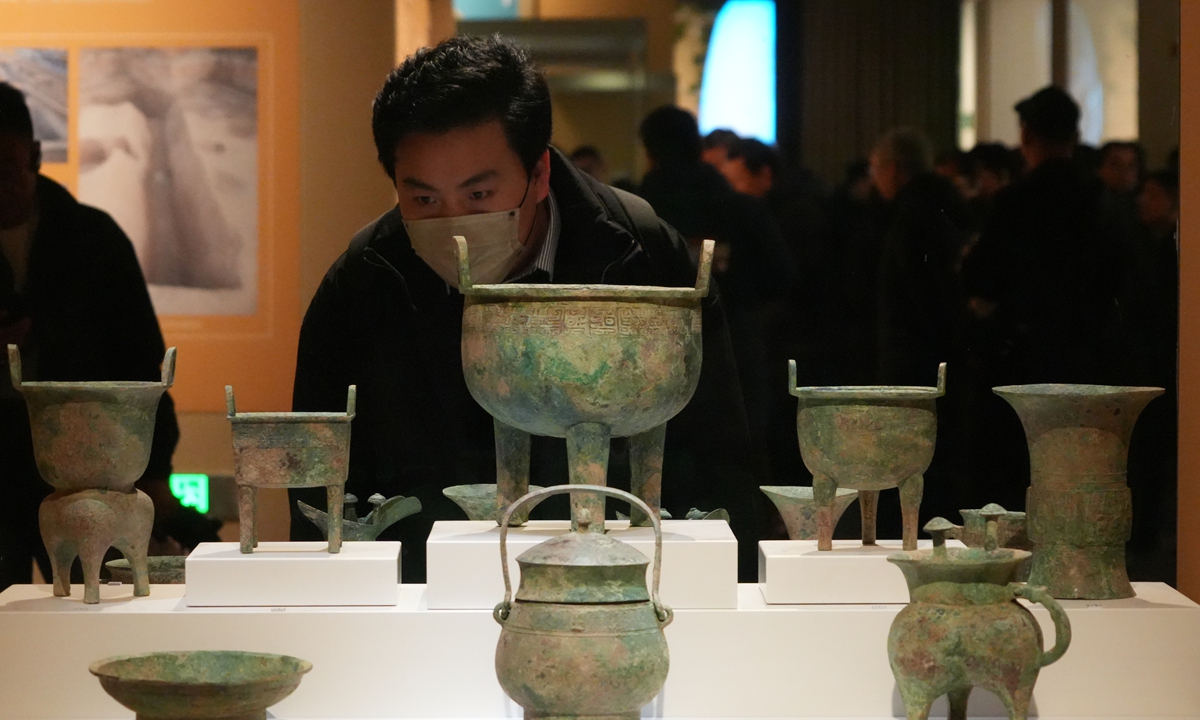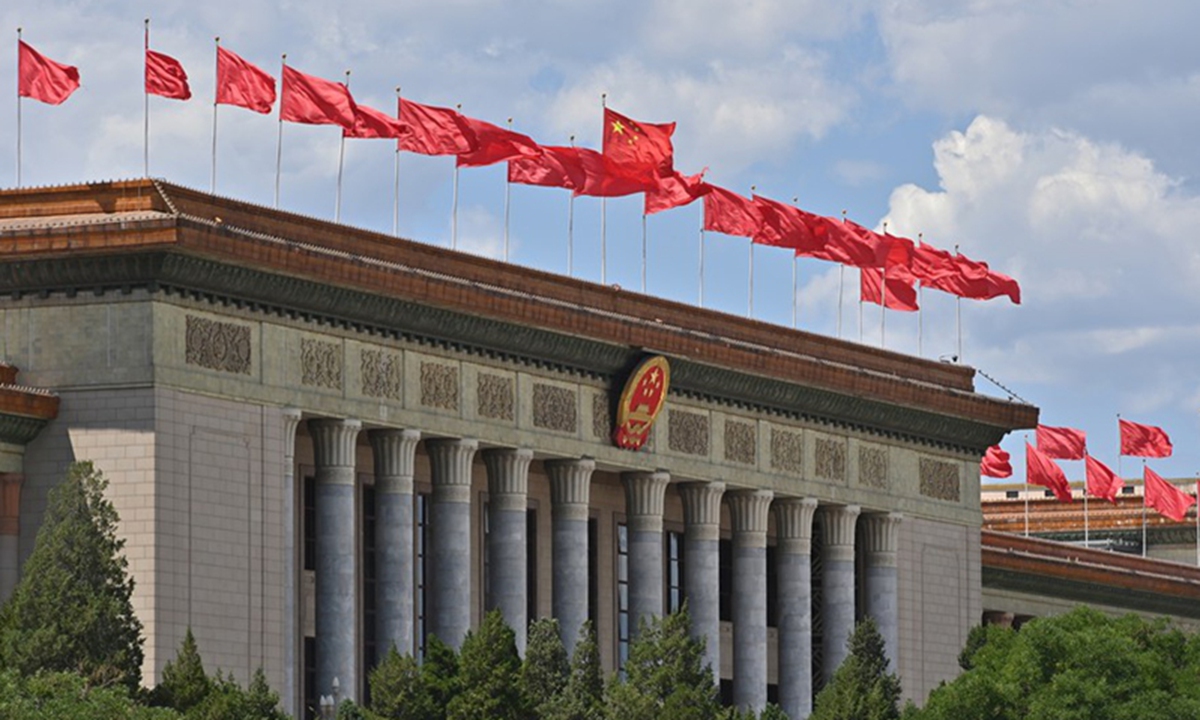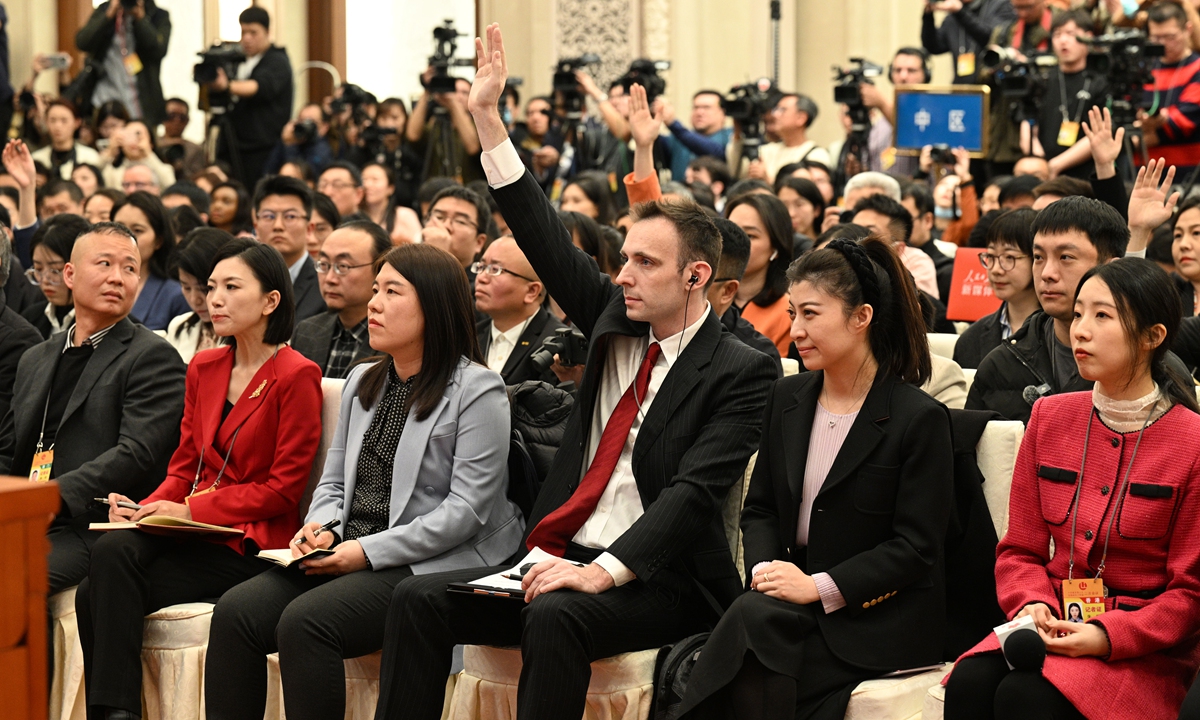Proposals at two sessions note future trend in museum, relic sectors
Cultural relic experts share insights into future trends

Visitors explore an exhibition at the new building of the Yinxu Museum in Anyang, Henan Province.Photo: VCG
The recently opened new building of the Yinxu Museum in Anyang, Central China's Henan Prov-ince, shows that Chinese museums have undoubtedly become a fulcrum for upholding the country's cultural tourist growth and continuously conveying the country's historical depth to visitors, especially younger ones.He Yuling, a Yinxu researcher as well as deputy of the National People's Congress (NPC), submitted a proposal at the ongoing two sessions in Beijing, in which he advocated bringing the site's representative Shang Dynasty (c.1600BC-1046BC) legacy closer to visitors through improved museum facilities.
Boasting more than 4,000 artifacts, the new building of the Yinxu Museum is China's first exhibition building dedicated to Shang Dynasty.
Such "niche displays" are a future trend in Chinese museology for educating the public about the breadth and depth of Chinese culture, Li Liyang, a museum management expert, told the Global Times.
Li is only one of the many expert NPC deputies and the members of the National Committee of the Chinese People's Political Consultative Conference (CPPCC) who have shared their insights about what future trends can boost China's museums and archaeological conservation efforts.
Guo Jin, an NPC deputy who is also an archaeologist from Yunnan Province, has called for enhancing scientific research and talent cultivation at many small-scale local museums in China.
High technology is particularly important for these museums, Guo noted. Also as a deputy director of Yunnan's Chengjiang Fossil Site Natural History Museum, Guo noted that the county-level museum is now equipped with advanced facilities such as interactive AR and holographic projection devices.
Guo is not the only expert who values digital technology's contribution to the museum field.
Wang Wanfu, an NPC deputy who is also a deputy director of the Department of Conservation Research at the Dunhuang Academy, has called for "enhancing relic digitalization resource sharing" between different organizations.
As museums have become an increasingly popular and enjoyable entertainment option for the public, some delegates have offered their suggestions regarding the protection of precious cultural artifacts.
Hang Kan, director of the Yungang Grottoes Research Institute and NPC deputy from North China's Shanxi Province, is advocating for a heightened focus on technological solutions when it comes to the preservation of this centuries-old Yungang Grottoes, which is a UNESCO World Heritage Site.
According to Hang, reinforcement efforts aimed at precarious rock formations have been carried out for several decades. The rock formations within the grottoes have all been reinforced and have entered the preventive conservation stage.
Despite these strides, challenges persist due to the complex geological conditions of the sandstone formations, which are susceptible to erosion from weathering, freezing, thawing and water infiltration.
Using technologies to prevent various forms of erosion is particularly important and urgent, Hang said, adding that greater technological support is extremely necessary in the research of grotto issues and the development of protective materials. He emphasized that there will be more technological investment in these areas.
Hang cited the 39th cave at the grottoes as an example, which is renowned for its central pagoda-like structure carved from stone. However, visible signs of weathering at its summit resembling delicate pastry layers indicate the extent of its deterioration.
Meanwhile, Gu Wanfa, NPC deputy and director of the Zhengzhou Cultural Heritage Bureau, suggested during an interview that museums should promptly apply the latest archaeological and academic research findings and incorporate them into exhibitions.
Gu emphasized the need for museums in the new era to invest in fields such as digital technology, diversification of interpretive teams, service innovation, better artifact displays and comprehensive exhibits showcasing the history of each cultural relic.
In addition, he says it is time to apply for UNESCO World Heritage status for the Yangshao Culture, which spans more than 2,000 years in the Yellow River Basin.
The bid for recognition of the Yangshao Culture, which was closely intertwined with the prehistoric cultures across the Eurasian continent, holds promise for deepening global understanding of China's cultural origins and revitalizing the heritage of the Yellow River basin, according to Gu.



